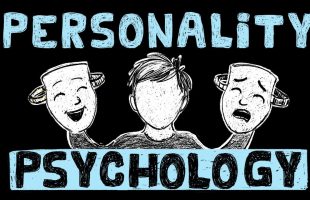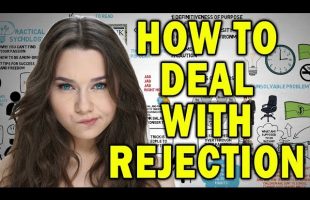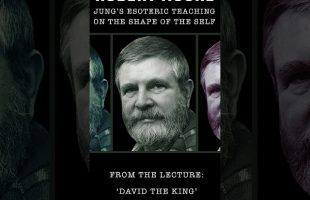Enjoy this recording of a fascinating academic essay by Nataša Tučev, University of Niš, Faculty of Philosophy, 2004.
I love LOTR. Since I delved into Jung I fall in love all over again with this immaculate mythology. The Archetypes, the motifs, the call to adventure, the archetypal battle between good and evil… the endless symbols in it. If you love LOTR too, you will enjoy this one.
0:00 – Introduction to Jungian Analysis of The Lord of the Rings
0:17 – Shadow as a Central Archetypal Motif in Tolkien’s Work
0:44 – Frodo’s Complex Journey and Transformation
1:35 – Frodo’s Realization of Lost Innocence After His Heroic Quest
2:14 – The Shire as a Metaphor for Frodo’s Pre-Quest Limited Awareness
3:03 – Transformation of Merry, Pippin, and Sam into Different Roles
3:41 – Frodo’s Journey of Self-Realization and Integration of the Shadow
4:25 – Reintegrating Shadow Qualities for Personal Growth
4:52 – Jung’s Criticism of Avoiding Shadow Work
5:29 – Projection of the Shadow in Political and Wartime Contexts
6:21 – Frodo’s Encounter with Shadow in The Lord of the Rings
7:07 – Frodo’s Three Wounds and the Shadow Figures Inflicting Them
7:30 – The Ring as a Catalyst for Encountering the Shadow
7:52 – The Ringwraiths as Embodiments of the Collective Shadow of Men
8:52 – Faramir’s Tender-Minded Approach to War and Civilization
9:41 – The Regression of Númenorians into a Culture of Death and War
10:44 – The Witch King as the Personification of Death (Thanatos)
11:25 – The Mythological History of Númenor and the Ring’s Corruption
12:44 – Aragorn’s Role in Acknowledging and Repairing Isildur’s Fault
13:45 – Shelob as an Archetypal Representation of the Terrible Mother
14:45 – Shelob and Galadriel as Split Manifestations of the Goddess Archetype
16:12 – The Union of Death and Sexuality in the Archetype of the Terrible Mother
16:34 – Frodo’s Near-Death Experience with Shelob and Symbolic Rebirth
17:45 – The White Lady and Queen of Hell as Two Sides of the Goddess
19:05 – Gollum’s Final Attack on Frodo and the Destruction of the Ring
19:59 – Gollum as Frodo’s Personal Shadow and Dark Double
21:19 – Gollum’s Fascination with Introspection and Darkness
22:18 – Gollum’s Acquisition of the Ring and the Birth of His Dark Self
23:02 – The Ego’s Alliance with the Shadow Through the Ring
24:04 – Bilbo’s Wisdom and Notion of the “One Road” Leading to Greater Responsibilities
24:57 – Frodo’s Decision to Take the Ring as a Call from the Self
25:43 – Frodo’s Shadow, Gollum, Providing Help in Moments of Crisis
26:22 – Frodo’s Gradual Recognition and Acceptance of His Dark Partner
27:31 – The Concept of Shadow Projection and Displacement
28:49 – Frodo’s Growth in Befriending and Understanding Gollum
29:39 – Gollum as Frodo’s Enemy and Sméagol as His Ally
30:23 – The Five Stages of Shadow Development According to Robert Bly
31:39 – Frodo’s Final Transformation into a Sadder and Wiser Man
32:03 – Frodo’s Departure and the Final Divorce Between Action and Contemplation
“Abstract: Archetypal analysis of Tolkien’s narrative points to the centrality of the motif of shadow, a mythological term adopted by Jung to refer to undesirable and suppressed aspects of both the personal and collective psyche. The paper focuses on Tolkien’s treatment of this motif with a view to exposing cultural and anthropological implications of his work, as well as his concept of personal growth, as exemplified by his protagonist Frodo. It is demonstrated that the collective shadow contents of Tolkien’s imaginary universe, which is predominantly patriarchal, originate in the projection of Thanatos and the hostility towards the daemonic, orgiastic (and hence disruptive) elements of the feminine. At the personal level, however, Tolkien is more hopeful and examines the prospect of integrating the shadow through the complex dynamic evolving between Frodo and Gollum as his Other. The process whereby this integration is achieved is gradual and the psychological experiences it entails – withdrawing projections, relinquishing the ideological constructs which justify animosity towards the Other, and recovering wholeness by recognizing the disowned portion of the Self – may all be discerned in Tolkien’s novel.”
A link to the essay – http://facta.junis.ni.ac.rs/lal/lal2004/lal2004-10.pdf
My aim is to let Jung’s work permeate our modern consciousness, bridging the gap between the archetypal reality of our collective unconscious and our daily lives. This involves connecting our profound ancestral wisdom with our current space-time continuum-our daily rituals, habits, and the often unconscious patterns that guide us. I am deeply passionate about contributing to our individual and collective path to individuation, self-development, and the realization of our soul’s true purpose.


